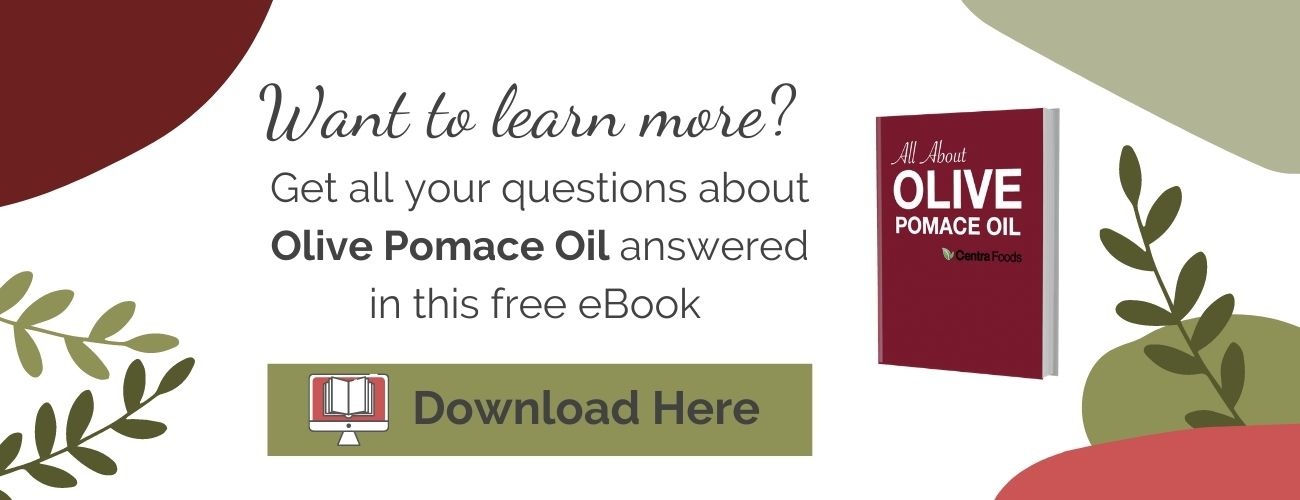Olive Pomace Oil is the lowest grade of olive oil. It is used by manufacturers across the US and Canada.
Here’s an overview of how it’s produced. This will help you understand how the oil is made and decide if it is the right ingredient for your product.
How Olive Oil Is Made [SlideShare]
If you want a quick visual overview, click through the slideshare below to see how the different grades of olive oil are made, including olive pomace oil.
For a more in-depth step by step review, including the refining process, keep reading.
How Olive Pomace Oil Is Made: A Step By Step Guide
The Olive Pomace Is Collected
The pomace is the dry pulp of the olive that remains after the olive is crushed into a paste and the first spin is completed producing Extra Virgin and Virgin Olive Oil. However, the leftover pomace still has oil in it, similar to how clothes are still wet after they go through the spin cycle in the washer.
The Oil Is Extracted
A solvent, typically hexane, is added to the pomace, and the oil is extracted. Then the solvent is removed. The resulting oil is known as raw or crude olive pomace oil.
Pomace Oil Is Refined
The oil is refined to create a mild taste and color. The refining process has a number of different steps, reviewed in more detail below
Step 1: Purification / Neutralization
 This initial phase of the refining process purifies the oil to eliminate excess acidity and makes it neutral. The oil passes through latest-generation centrifuges, which separate the oil from any olive sediment.
This initial phase of the refining process purifies the oil to eliminate excess acidity and makes it neutral. The oil passes through latest-generation centrifuges, which separate the oil from any olive sediment.
The oil is also allowed to settle, allowing olive sediment and particles to gravitate towards the bottom of a cone shaped tank and be removed. This helps avoid any cloudiness in the oil.
Step 2: Winterization
This process involves the removal of natural waxes from the neutral oil that may cause it to cloud or even freeze at low temperatures. To achieve this, the oil is cooled and slowly mixed: the crystals formed during the slow mixing are separated by the traditional method of decanting, leaving the remaining oil bright and clear.
Step 3: Color Clarification
Refined olive pomace oil has a consistent color, due to a natural bleaching process that’s performed. The oil is warmed and bleaching earth (a type of clay) or activated carbon is used to filter the oil. In the process, any dark plant pigments are absorbed and the remaining oil is a characteristic yellow-green hue.
Step 4: Deodorization
Steam is mixed with the oil. This stage of the process creates a light odor and taste, giving the finished product no smell, and a bland yet slightly almondy taste.
After the final refining step, olive pomace oil is stored in opaque and airtight storage tanks, and then shipped around the world.
Want to learn more? Check out Olive Pomace Oil: The Ultimate Guide for a deep dive on everything Olive Pomace Oil.
Topics: Olive Pomace Oil













